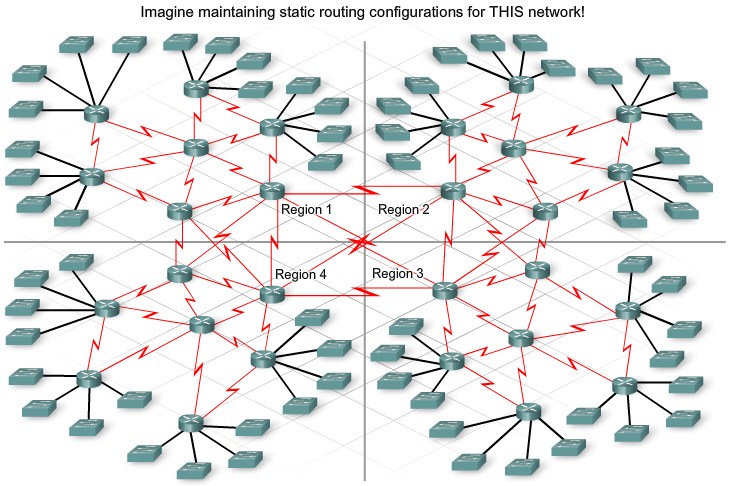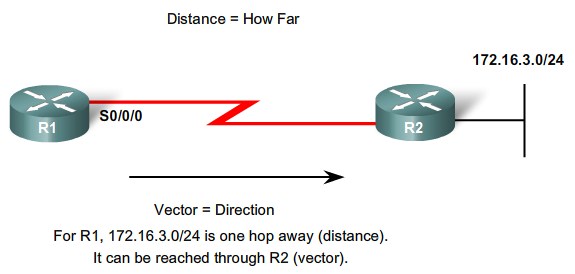CCNA Explorer 2 Distance Vector Routing Protocols
Contents
Introduction to Distance Vector Routing Protocols
Distance Vector Routing Protocols
RIP
- Hop count is used as the metric for path selection.
- If the hop count for a network is greater than 15, RIP cannot supply a route to that network.
- Routing updates are broadcast or multicast every 30 seconds, by default.
IGRP
- Bandwidth, delay, load and reliability are used to create a composite metric.
- Routing updates are broadcast every 90 seconds, by default.
- IGRP is the predecessor of EIGRP and is now obsolete.
EIGRP
- It can perform unequal cost load balancing.
- It uses Diffusing Update Algorithm (DUAL) to calculate the shortest path.
- There are no periodic updates as with RIP and IGRP. Routing updates are sent only when there is a change in the topology.
Distance Vector technology
Periodic Updates are sent at regular intervals (30 seconds for RIP and 90 seconds for IGRP). Even if the topology has not changed in several days, periodic updates continue to be sent to all neighbors.
Neighbors are routers that share a link and are configured to use the same routing protocol. The router is only aware of the network addresses of its own interfaces and the remote network addresses it can reach through its neighbors. It has no broader knowledge of the network topology. Routers using distance vector routing are not aware of the network topology.
Broadcast Updates are sent to 255.255.255.255. Neighboring routers that are configured with the same routing protocol will process the updates. All other devices will also process the update up to Layer 3 before discarding it. Some distance vector routing protocols use multicast addresses instead of broadcast addresses.
Entire Routing Table Updates are sent, with some exceptions to be discussed later, periodically to all neighbors. Neighbors receiving these updates must process the entire update to find pertinent information and discard the rest. Some distance vector routing protocols like EIGRP do not send periodic routing table updates.
Routing Protocol Characteristics
- Time to Convergence
- Scalability
- Classless (Use of VLSM) or Classful
- Resource Usage
- Implementation and Maintenance

